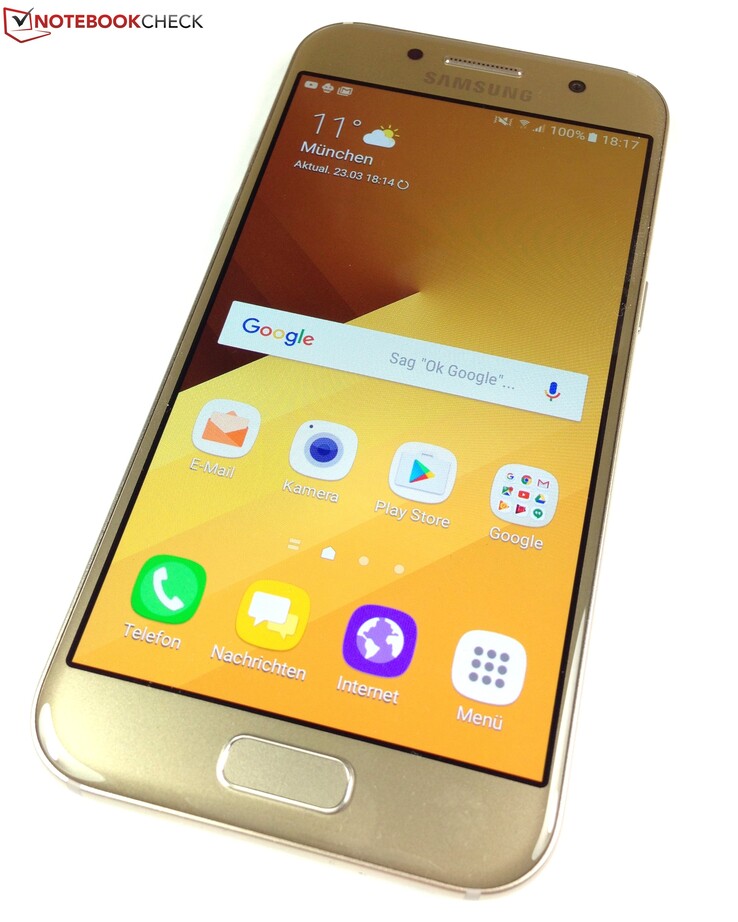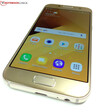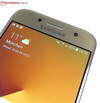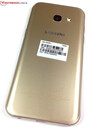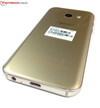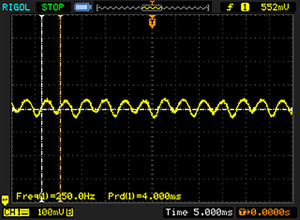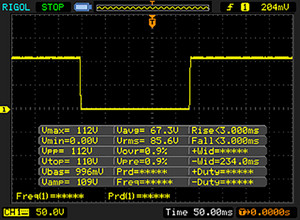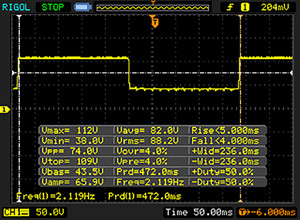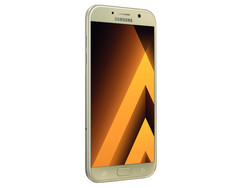Breve análisis del Smartphone Samsung Galaxy A3 (2017)
Top 10 Análisis
» Top 10 Portátiles Multimedia
» Top 10 Portátiles de Juego
» Top 10 Portátiles de Juego ligeros
» Top 10 Portátiles Asequibles de Oficina/Empresa
» Top 10 Portátiles de Juego Ligeros
» Top 10 Portátiles de Oficina/Empresa Premium
» Top 10 Estaciones de Trabajo
» Top 10 Subportátiles
» Top 10 Ultrabooks
» Top 10 Convertibles
» Top 10 Tablets
» Top 10 Tablets Windows
» Top 10 Tablets de menos de 250 Euros
» Top 10 Phablets (>5.5")
» Top 10 Smartphones
» Top 10 Smartphones (≤5")
» Top 10 Smartphones de menos de 300 Euros
» Top 10 Smartphones de menos de 120 Euros
» Top 10 Portátiles de menos de 1000 Euros
» Top 10 Portátiles de menos de 500 Euros
» Top 10 Portátiles de menos de 300 Euros
» Los Mejores Displays de Portátiles Analizados por Notebookcheck
| Networking | |
| iperf3 transmit AX12 | |
| Lenovo ZUK Z2 | |
| BQ Aquaris X5 Plus | |
| Samsung Galaxy A3 2017 | |
| HTC One A9s | |
| Wiko U Feel Prime | |
| Huawei Nova | |
| iperf3 receive AX12 | |
| BQ Aquaris X5 Plus | |
| Samsung Galaxy A3 2017 | |
| Lenovo ZUK Z2 | |
| HTC One A9s | |
| Wiko U Feel Prime | |
| Huawei Nova | |
| |||||||||||||||||||||||||
iluminación: 94 %
Brillo con batería: 574 cd/m²
Contraste: ∞:1 (Negro: 0 cd/m²)
ΔE ColorChecker Calman: 2.4 | ∀{0.5-29.43 Ø4.77}
ΔE Greyscale Calman: 1.9 | ∀{0.09-98 Ø5}
Gamma: 2.09
CCT: 6502 K
| Samsung Galaxy A3 2017 Super AMOLED, 1280x720, 4.7" | BQ Aquaris X5 Plus IPS, 1920x1080, 5" | Huawei Nova IPS, 1920x1080, 5" | HTC One A9s IPS, 1280x720, 5" | Lenovo ZUK Z2 IPS, 1920x1080, 5" | Wiko U Feel Prime IPS, 1920x1080, 5" | Samsung Galaxy A3 2016 Super AMOLED, 1280x720, 4.7" | |
|---|---|---|---|---|---|---|---|
| Screen | -16% | -47% | -53% | -55% | -51% | 4% | |
| Brightness middle (cd/m²) | 574 | 640 11% | 493 -14% | 348 -39% | 512 -11% | 411 -28% | 386 -33% |
| Brightness (cd/m²) | 576 | 609 6% | 485 -16% | 320 -44% | 502 -13% | 386 -33% | 394 -32% |
| Brightness Distribution (%) | 94 | 85 -10% | 94 0% | 85 -10% | 84 -11% | 86 -9% | 88 -6% |
| Black Level * (cd/m²) | 0.93 | 0.44 | 0.23 | 0.58 | 0.36 | ||
| Colorchecker dE 2000 * | 2.4 | 2.8 -17% | 4.2 -75% | 3.5 -46% | 3.8 -58% | 4.3 -79% | 1.11 54% |
| Colorchecker dE 2000 max. * | 3.8 | 5.7 -50% | 6.6 -74% | 6.4 -68% | 11.2 -195% | 7.9 -108% | 3.35 12% |
| Greyscale dE 2000 * | 1.9 | 2.6 -37% | 3.8 -100% | 4 -111% | 2.7 -42% | 2.8 -47% | 1.34 29% |
| Gamma | 2.09 105% | 2.35 94% | 2.39 92% | 2.3 96% | 2.09 105% | 2.53 87% | 2.12 104% |
| CCT | 6502 100% | 6477 100% | 7438 87% | 6527 100% | 6076 107% | 6589 99% | 6441 101% |
| Contrast (:1) | 688 | 1120 | 1513 | 883 | 1142 |
* ... más pequeño es mejor
Parpadeo de Pantalla / PWM (Pulse-Width Modulation)
| Parpadeo de Pantalla / PWM detectado | 250 Hz | ||
La retroiluminación del display parpadea a 250 Hz (seguramente usa PWM - Pulse-Width Modulation) . La frecuencia de 250 Hz es relativamente baja, por lo que la gente sensible debería ver parpadeos y padecer fatiga visual por la pantalla (usado al brillo indicado a continuación). Comparación: 53 % de todos los dispositivos testados no usaron PWM para atenuar el display. Si se usó, medimos una media de 8084 (mínimo: 5 - máxmo: 343500) Hz. | |||
Tiempos de respuesta del display
| ↔ Tiempo de respuesta de Negro a Blanco | ||
|---|---|---|
| 6 ms ... subida ↗ y bajada ↘ combinada | ↗ 3 ms subida | |
| ↘ 3 ms bajada | ||
| La pantalla mostró tiempos de respuesta muy rápidos en nuestros tests y debería ser adecuada para juegos frenéticos. En comparación, todos los dispositivos de prueba van de ##min### (mínimo) a 240 (máximo) ms. » 17 % de todos los dispositivos son mejores. Esto quiere decir que el tiempo de respuesta medido es mejor que la media (20.2 ms) de todos los dispositivos testados. | ||
| ↔ Tiempo de respuesta 50% Gris a 80% Gris | ||
| 9 ms ... subida ↗ y bajada ↘ combinada | ↗ 5 ms subida | |
| ↘ 4 ms bajada | ||
| La pantalla mostró tiempos de respuesta rápidos en nuestros tests y debería ser adecuada para juegos. En comparación, todos los dispositivos de prueba van de ##min### (mínimo) a 636 (máximo) ms. » 21 % de todos los dispositivos son mejores. Esto quiere decir que el tiempo de respuesta medido es mejor que la media (31.6 ms) de todos los dispositivos testados. | ||
| AnTuTu v6 - Total Score (ordenar por valor) | |
| Samsung Galaxy A3 2017 | |
| BQ Aquaris X5 Plus | |
| Huawei Nova | |
| HTC One A9s | |
| Lenovo ZUK Z2 | |
| Wiko U Feel Prime | |
| Samsung Galaxy A3 2016 | |
| Geekbench 4.0 | |
| 64 Bit Single-Core Score (ordenar por valor) | |
| Samsung Galaxy A3 2017 | |
| BQ Aquaris X5 Plus | |
| Huawei Nova | |
| HTC One A9s | |
| Wiko U Feel Prime | |
| 64 Bit Multi-Core Score (ordenar por valor) | |
| Samsung Galaxy A3 2017 | |
| BQ Aquaris X5 Plus | |
| Huawei Nova | |
| HTC One A9s | |
| Wiko U Feel Prime | |
| GFXBench (DX / GLBenchmark) 2.7 | |
| T-Rex Onscreen (ordenar por valor) | |
| Samsung Galaxy A3 2017 | |
| BQ Aquaris X5 Plus | |
| Huawei Nova | |
| HTC One A9s | |
| Lenovo ZUK Z2 | |
| Wiko U Feel Prime | |
| Samsung Galaxy A3 2016 | |
| 1920x1080 T-Rex Offscreen (ordenar por valor) | |
| Samsung Galaxy A3 2017 | |
| BQ Aquaris X5 Plus | |
| Huawei Nova | |
| HTC One A9s | |
| Lenovo ZUK Z2 | |
| Wiko U Feel Prime | |
| Samsung Galaxy A3 2016 | |
| GFXBench 3.0 | |
| on screen Manhattan Onscreen OGL (ordenar por valor) | |
| Samsung Galaxy A3 2017 | |
| BQ Aquaris X5 Plus | |
| Huawei Nova | |
| HTC One A9s | |
| Lenovo ZUK Z2 | |
| Wiko U Feel Prime | |
| Samsung Galaxy A3 2016 | |
| 1920x1080 1080p Manhattan Offscreen (ordenar por valor) | |
| Samsung Galaxy A3 2017 | |
| BQ Aquaris X5 Plus | |
| Huawei Nova | |
| HTC One A9s | |
| Lenovo ZUK Z2 | |
| Wiko U Feel Prime | |
| Samsung Galaxy A3 2016 | |
| GFXBench 3.1 | |
| on screen Manhattan ES 3.1 Onscreen (ordenar por valor) | |
| Samsung Galaxy A3 2017 | |
| BQ Aquaris X5 Plus | |
| Huawei Nova | |
| HTC One A9s | |
| Lenovo ZUK Z2 | |
| Wiko U Feel Prime | |
| 1920x1080 Manhattan ES 3.1 Offscreen (ordenar por valor) | |
| Samsung Galaxy A3 2017 | |
| BQ Aquaris X5 Plus | |
| Huawei Nova | |
| HTC One A9s | |
| Lenovo ZUK Z2 | |
| Wiko U Feel Prime | |
| PCMark for Android - Work performance score (ordenar por valor) | |
| Samsung Galaxy A3 2017 | |
| BQ Aquaris X5 Plus | |
| Huawei Nova | |
| HTC One A9s | |
| Lenovo ZUK Z2 | |
| Wiko U Feel Prime | |
| Samsung Galaxy A3 2016 | |
| Octane V2 - Total Score (ordenar por valor) | |
| Samsung Galaxy A3 2017 | |
| BQ Aquaris X5 Plus | |
| Huawei Nova | |
| HTC One A9s | |
| Lenovo ZUK Z2 | |
| Wiko U Feel Prime | |
| Samsung Galaxy A3 2016 | |
| Mozilla Kraken 1.1 - Total (ordenar por valor) | |
| Samsung Galaxy A3 2017 | |
| BQ Aquaris X5 Plus | |
| Huawei Nova | |
| HTC One A9s | |
| Lenovo ZUK Z2 | |
| Wiko U Feel Prime | |
| Samsung Galaxy A3 2016 | |
| WebXPRT 2015 - Overall (ordenar por valor) | |
| Samsung Galaxy A3 2017 | |
| Huawei Nova | |
| HTC One A9s | |
| Samsung Galaxy A3 2016 | |
| JetStream 1.1 - Total Score (ordenar por valor) | |
| Samsung Galaxy A3 2017 | |
| BQ Aquaris X5 Plus | |
| Huawei Nova | |
| HTC One A9s | |
| Lenovo ZUK Z2 | |
| Wiko U Feel Prime | |
| Samsung Galaxy A3 2016 | |
* ... más pequeño es mejor
| Samsung Galaxy A3 2017 Mali-T830 MP1, 7870 Octa, 16 GB eMMC Flash | BQ Aquaris X5 Plus Adreno 510, 652 MSM8976, 16 GB eMMC Flash | Huawei Nova Adreno 506, 625, 32 GB eMMC Flash | HTC One A9s Mali-T860 MP2, Helio P10 MT6755, 32 GB eMMC Flash | Lenovo ZUK Z2 Adreno 530, 820 MSM8996, 64 GB eMMC Flash | Wiko U Feel Prime Adreno 505, 430, 32 GB eMMC Flash | Samsung Galaxy A3 2016 Mali-T720 MP2, 7578, 16 GB eMMC Flash | |
|---|---|---|---|---|---|---|---|
| AndroBench 3-5 | 20% | 87% | 35% | -6% | 51% | -13% | |
| Sequential Read 256KB (MB/s) | 199.7 | 228.4 14% | 248.3 24% | 210.2 5% | 239.4 20% | 270.9 36% | 168.8 -15% |
| Sequential Write 256KB (MB/s) | 45.96 | 47.03 2% | 75 63% | 68.6 49% | 46.52 1% | 137.3 199% | 27.27 -41% |
| Random Read 4KB (MB/s) | 22.32 | 36.85 65% | 38.19 71% | 21.3 -5% | 21.27 -5% | 55 146% | 21.92 -2% |
| Random Write 4KB (MB/s) | 9.62 | 12.44 29% | 44.63 364% | 34.6 260% | 5.64 -41% | 9.4 -2% | 10.27 7% |
| Sequential Read 256KB SDCard (MB/s) | 75.5 | 73.2 -3% | 79.5 5% | 39.6 -48% | 41.98 -44% | ||
| Sequential Write 256KB SDCard (MB/s) | 50.1 | 54.9 10% | 47.69 -5% | 25.6 -49% | 35.21 -30% |
| Asphalt 8: Airborne | |||
| Configuraciones | Valor | ||
| high | 23 fps | ||
| very low | 29 fps | ||
| Dead Trigger 2 | |||
| Configuraciones | Valor | ||
| high | 52 fps | ||
(+) La temperatura máxima en la parte superior es de 31.8 °C / 89 F, frente a la media de 35.2 °C / 95 F, que oscila entre 21.9 y 247 °C para la clase Smartphone.
(+) El fondo se calienta hasta un máximo de 32 °C / 90 F, frente a la media de 34 °C / 93 F
(+) En reposo, la temperatura media de la parte superior es de 27.3 °C / 81# F, frente a la media del dispositivo de 32.9 °C / 91 F.
Samsung Galaxy A3 2017 análisis de audio
(+) | los altavoces pueden reproducir a un volumen relativamente alto (#82.6 dB)
Graves 100 - 315 Hz
(-) | casi sin bajos - de media 19.2% inferior a la mediana
(±) | la linealidad de los graves es media (9.7% delta a frecuencia anterior)
Medios 400 - 2000 Hz
(±) | medias más altas - de media 8.7% más altas que la mediana
(±) | la linealidad de los medios es media (7.4% delta respecto a la frecuencia anterior)
Altos 2 - 16 kHz
(±) | máximos más altos - de media 5.6% más altos que la mediana
(+) | los máximos son lineales (6.9% delta a la frecuencia anterior)
Total 100 - 16.000 Hz
(±) | la linealidad del sonido global es media (26.1% de diferencia con la mediana)
En comparación con la misma clase
» 66% de todos los dispositivos probados de esta clase eran mejores, 6% similares, 28% peores
» El mejor tuvo un delta de 11%, la media fue 35%, el peor fue ###max##%
En comparación con todos los dispositivos probados
» 80% de todos los dispositivos probados eran mejores, 4% similares, 16% peores
» El mejor tuvo un delta de 4%, la media fue 24%, el peor fue ###max##%
Samsung Galaxy A3 2016 análisis de audio
(+) | los altavoces pueden reproducir a un volumen relativamente alto (#84.4 dB)
Graves 100 - 315 Hz
(-) | casi sin bajos - de media 32.6% inferior a la mediana
(±) | la linealidad de los graves es media (11.5% delta a frecuencia anterior)
Medios 400 - 2000 Hz
(+) | medios equilibrados - a sólo 3.2% de la mediana
(+) | los medios son lineales (6.5% delta a la frecuencia anterior)
Altos 2 - 16 kHz
(+) | máximos equilibrados - a sólo 4% de la mediana
(+) | los máximos son lineales (5.5% delta a la frecuencia anterior)
Total 100 - 16.000 Hz
(±) | la linealidad del sonido global es media (22.8% de diferencia con la mediana)
En comparación con la misma clase
» 50% de todos los dispositivos probados de esta clase eran mejores, 6% similares, 44% peores
» El mejor tuvo un delta de 11%, la media fue 35%, el peor fue ###max##%
En comparación con todos los dispositivos probados
» 67% de todos los dispositivos probados eran mejores, 6% similares, 28% peores
» El mejor tuvo un delta de 4%, la media fue 24%, el peor fue ###max##%
HTC One A9s análisis de audio
(+) | los altavoces pueden reproducir a un volumen relativamente alto (#82.6 dB)
Graves 100 - 315 Hz
(-) | casi sin bajos - de media 18.2% inferior a la mediana
(±) | la linealidad de los graves es media (13.5% delta a frecuencia anterior)
Medios 400 - 2000 Hz
(±) | medias más altas - de media 5.4% más altas que la mediana
(+) | los medios son lineales (5.4% delta a la frecuencia anterior)
Altos 2 - 16 kHz
(±) | máximos más altos - de media 11.7% más altos que la mediana
(±) | la linealidad de los máximos es media (8.3% delta a frecuencia anterior)
Total 100 - 16.000 Hz
(±) | la linealidad del sonido global es media (28.6% de diferencia con la mediana)
En comparación con la misma clase
» 74% de todos los dispositivos probados de esta clase eran mejores, 4% similares, 21% peores
» El mejor tuvo un delta de 11%, la media fue 35%, el peor fue ###max##%
En comparación con todos los dispositivos probados
» 86% de todos los dispositivos probados eran mejores, 3% similares, 12% peores
» El mejor tuvo un delta de 4%, la media fue 24%, el peor fue ###max##%
| Off / Standby | |
| Ocioso | |
| Carga |
|
Clave:
min: | |
| Samsung Galaxy A3 2017 2350 mAh | BQ Aquaris X5 Plus 3200 mAh | Huawei Nova 3020 mAh | HTC One A9s 2300 mAh | Lenovo ZUK Z2 3500 mAh | Wiko U Feel Prime 3000 mAh | Samsung Galaxy A3 2016 2300 mAh | |
|---|---|---|---|---|---|---|---|
| Power Consumption | -137% | -111% | -185% | -193% | -94% | -82% | |
| Idle Minimum * (Watt) | 0.37 | 0.87 -135% | 0.61 -65% | 1.29 -249% | 1.31 -254% | 0.66 -78% | 0.96 -159% |
| Idle Average * (Watt) | 0.78 | 1.33 -71% | 1.83 -135% | 2.28 -192% | 2.03 -160% | 1.66 -113% | 1.39 -78% |
| Idle Maximum * (Watt) | 0.84 | 1.35 -61% | 1.86 -121% | 2.52 -200% | 2.08 -148% | 1.76 -110% | 1.45 -73% |
| Load Average * (Watt) | 1.52 | 5.44 -258% | 3.71 -144% | 4.06 -167% | 5.45 -259% | 2.85 -88% | 2.65 -74% |
| Load Maximum * (Watt) | 2.75 | 7.11 -159% | 5.19 -89% | 5.91 -115% | 6.75 -145% | 5.01 -82% | 3.51 -28% |
* ... más pequeño es mejor
| Samsung Galaxy A3 2017 2350 mAh | BQ Aquaris X5 Plus 3200 mAh | Huawei Nova 3020 mAh | HTC One A9s 2300 mAh | Lenovo ZUK Z2 3500 mAh | Wiko U Feel Prime 3000 mAh | Samsung Galaxy A3 2016 2300 mAh | |
|---|---|---|---|---|---|---|---|
| Duración de Batería | -24% | -17% | -41% | -18% | -35% | -20% | |
| Reader / Idle (h) | 47.7 | 31.2 -35% | 25.7 -46% | 20.9 -56% | 33 -31% | ||
| H.264 (h) | 16.5 | 12 -27% | 9.8 -41% | 14.4 -13% | |||
| WiFi v1.3 (h) | 11.1 | 8.4 -24% | 14.6 32% | 8.6 -23% | 9.1 -18% | 9.6 -14% | 10.5 -5% |
| Load (h) | 8.9 | 5.5 -38% | 4.1 -54% | 6.3 -29% |
Pro
Contra
No hay apenas motivos para actualizarse para aquellos que ya tengan el anterior Galaxy A3 (2016). Con su calidad de construcción similar, empero, el modelo de este año tiene algunas ventajas.
Primero de todo, el Galaxy A3 (2017) ahora resiste al polvo y al agua con IP68. Además, tiene un puerto USB Type-C, su cámara trasera ya no sobresale, parece bastante más resistente gracias a la falta del mencionado marco plateado, y usa un sistema operativo más reciente Android 6.0.1.
Actualizar el procesador al Exynos 7870 más rápido sí tuvo el efecto esperado en el rendimiento general. Las mejoras de aguante de batería son más importantes: debido a su increíble eficiencia energética, el Galaxy A3 (2017) es una bestia con aguante extremo. Sendas cámaras también han mejorado, y la última reiteración lo hace mucho mejor a poca luz. La cámara frontal ha mejorado de 5 a 8 megapixels.
El Galaxy A3 (2017) no reinventa la rueda; sino que sus mejoras iterativas han sido gentiles y efectivas.
A pesar de su manejabe formato de 4.7", la suave trasera puede causar algún problema con ciertos usuarios. Lo único que puedes hacer realmente es probarlo tú mismo si el teléfono te resulta resbaladizo. A nosotros no nos importa la cubierta trasera lustrosa. No hay forma de edulcorar los defectos: ni MHL, ni soporta dual SIM-card, ni estabilización de imagen óptica. Algunos usuarios pueden haber notado parpadeo PWM en niveles de brillo por debajo del 92%. A pesar de estas limitaciones, el Galaxy A3 (2017) sigue siendo un smartphone gama media muy sólido y respetable con poco motivo de queja.
Ésta es una versión acortada del análisis original. Puedes leer el análisis completo en inglés aquí.
Samsung Galaxy A3 2017
- 09/03/2022 v7 (old)
Manuel Masiero




